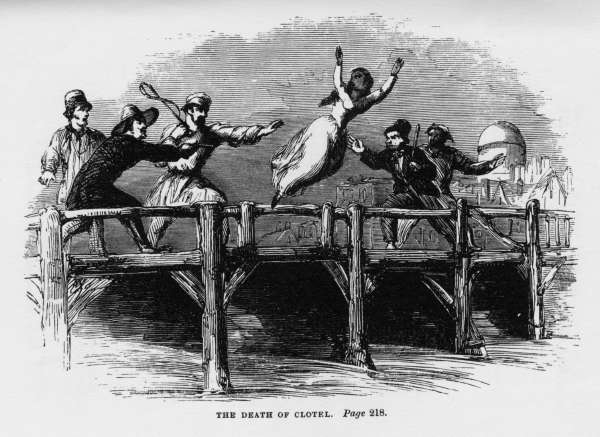About Publications Library Archives
heritagepost.org

Preserving Revolutionary & Civil War History

Preserving Revolutionary & Civil War History

Credit: Clotel: The President’s Daughter: A Narrative of Slave Life in the United States. by William Wells Brown
Media type: engraving
Museum Number:
Annotation: The novel opens with the auction of Currer, the supposed mistress of Thomas Jefferson, and their two daughters, Clotel and Althesa, and highlights the horrifying injustices to mixed-race individuals under slavery. Horatio Green, the son of a wealthy Richmond planter, purchases and marries Clotel, but both Althesa and Currer, fall into the hands of the notoriously villainous slave trader, Dick Walker. Althesa and Currer are sold away from one another and into more degrading forms of bondage. Currer dies from yellow fever just before Rev. John Peck’s abolitionist-minded daughter, Georgiana, can emancipate her. Althesa marries her white owner Henry Morton, but their two daughters are sold into slavery when couple dies. Clotel, like her mother and sister, also meets a tragic end. She and Horatio initially live in secret harmony and have a daughter Mary. Eventually Horatio’s political ambitions become a problem. Having never legally married Clotel (for mixed-race marriages were illegal in Virginia as in much of the South), Horatio soon becomes involved with a local politician’s daughter. Horatio abandons Clotel and Mary and marries Gertrude. Clotel and Mary’s existence are discovered by the new Mrs. Greene, who stumbles upon the cabin and is startled by Mary’s close resemblance to her husband Horatio. She immediately demands Clotel’s enslavement. Clotel is sold to Dick Walker, and Gertrude takes Mary into her home as a house servant. Managing to escape while disguised as a man, Clotel returns to Virginia to rescue her child, but is discovered and imprisoned. Clotel escapes again, and she flings herself into the Potomac River
Year: 1853